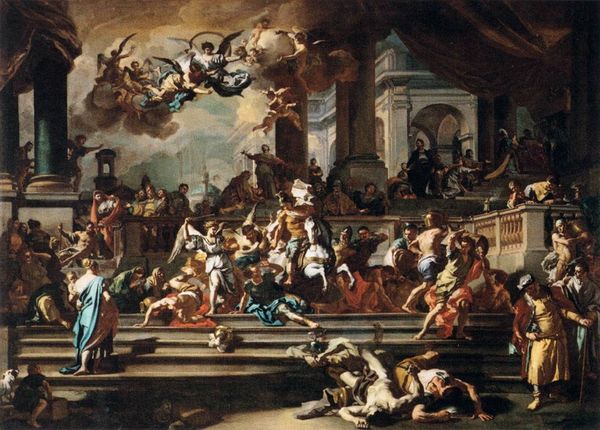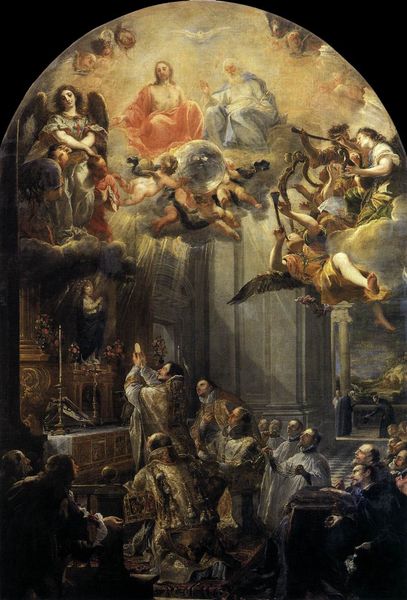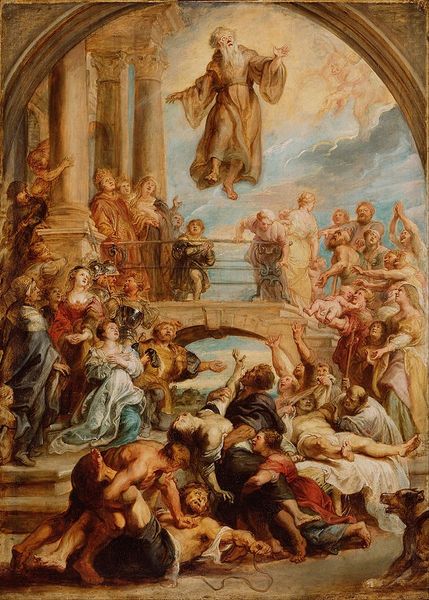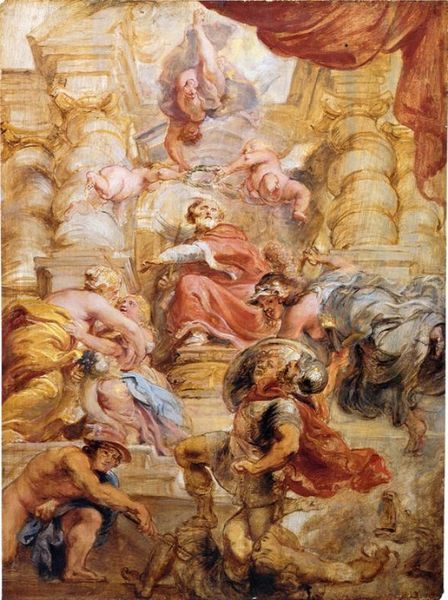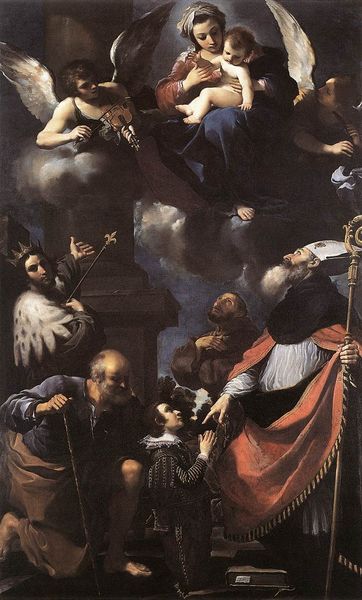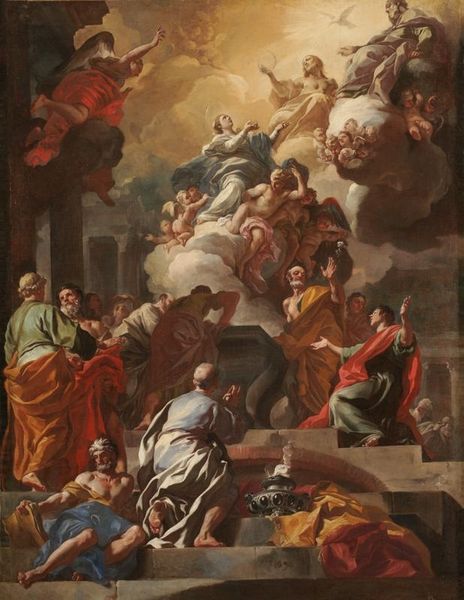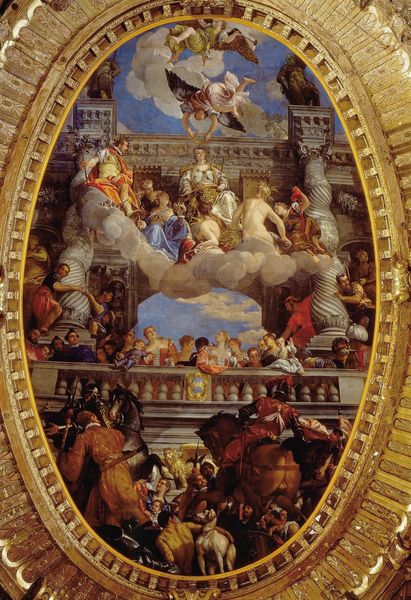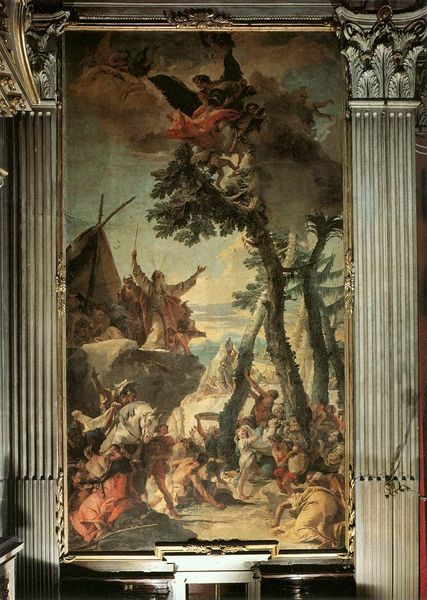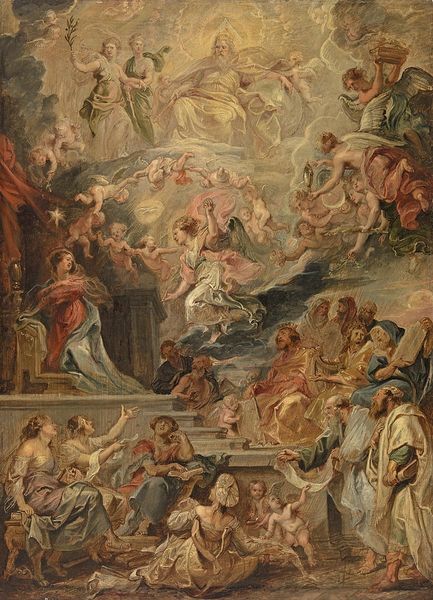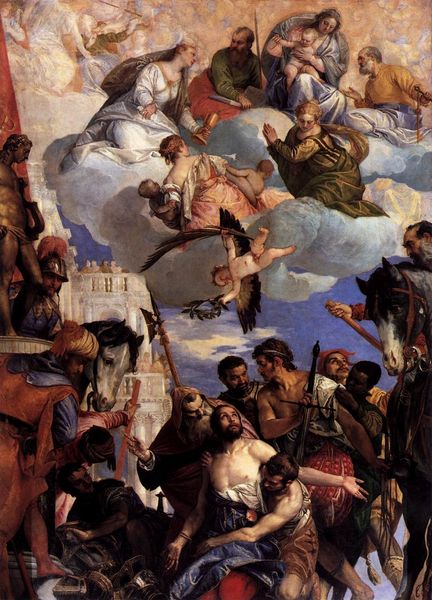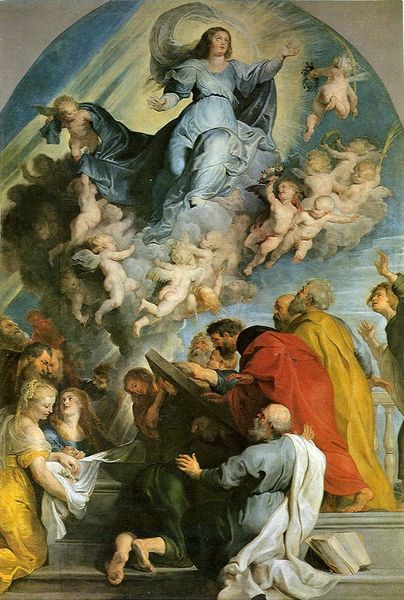
The Massacre of the Giustiniani at Chios 1715
0:00
0:00
francescosolimena
National Museum of Capodimonte, Naples, Italy
oil-paint
#
allegory
#
baroque
#
oil-paint
#
war
#
figuration
#
oil painting
#
history-painting
Dimensions: 275 x 163 cm
Copyright: Public domain
Curator: What immediately strikes me is the painting’s dynamism; it is swirling, overwhelming even. Editor: Indeed. What you are experiencing is not accidental, for this Baroque canvas by Francesco Solimena, painted around 1715, depicts "The Massacre of the Giustiniani at Chios," now hanging in the National Museum of Capodimonte, Naples. Curator: Chios… there's a symbolic weight there. It evokes classical histories, but rendered here with such a riotous, almost chaotic energy. Is it intended as an allegory, a representation beyond a simple historical depiction? Editor: Absolutely, we cannot shy away from the disturbing power dynamics in this depiction. The “massacre” frames colonial violence: Ottoman forces targeted the Giustiniani family who governed Chios under Genoese rule. Look closely at who's on top, and who is at the bottom. Curator: There's an obvious asymmetry—victors and vanquished. But I am drawn upwards. Do you notice the idealized figures above, floating amid the chaos? It's such a contrast, almost heavenly, set against the grim brutality below. What cultural memory is Solimena seeking to create or reinforce with these choices? Editor: I am more interested in challenging any inclination to legitimize power structures depicted, or how they reflect his political climate. Was he deliberately crafting a narrative that serves certain interests? Did his patrons believe his version of the massacre would serve some benefit to them? Those angels hovering above feel, at best, disconnected, and at worst, complicit. Curator: So you’re seeing a deliberate, politically motivated misrepresentation. And what of Solimena himself? He surely knew the symbolic weight of depicting war. The angels themselves…do you not think there is symbolism within their arrangement and gaze, a potential commentary beyond simple heavenly approval? Editor: I hesitate to dissect it in terms of timeless symbolic meaning as I am certain the cultural and historical contingencies surrounding its production cannot be underestimated. For example, were these “angels” not figures of privilege, oblivious to the human cost of expansionist conflicts and domination? Curator: I can appreciate that perspective; it tempers a rush to timeless interpretations. Perhaps the unresolved tension, between the ideal and the real, the heavenly and the earthly, is precisely the point—a mirror to the complexities of history itself. Editor: It makes me think about how history is retold through an artwork’s patron and context, doesn't it? Art isn’t created in a vacuum; that's where power dynamics and politics take center stage.
Comments
No comments
Be the first to comment and join the conversation on the ultimate creative platform.
